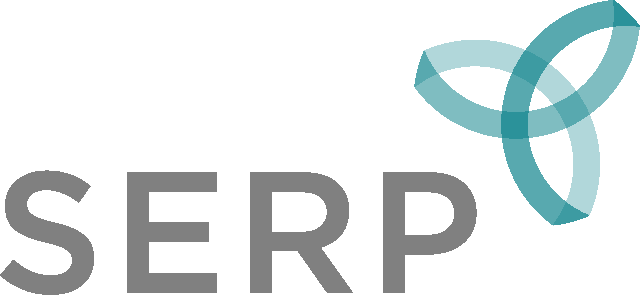Clear Expectations
Action 1
Cultivate a shared vision of ambitious and equitable instruction that supports rigorous learning and positive academic identities for all students.
Across schools within a district, and across classrooms within a school, there is enormous variation in the quality of instruction. Jal Mehta and Sarah Fine
<1> conducted a broad search for high schools in which the quality of instruction was consistent across classrooms. They were able to identify only a rare few. What those schools had in common was a
specific vision of high-quality instruction, clear expectations that all teachers and instructional leaders would work toward that vision, and
aligned support to meet those expectations. The conception of high-quality instruction differed significantly across the two examples Mehta and Fine explore in depth: teachers were expected to follow a tight, discipline-specific instructional model in one case, and to provide opportunities for interdisciplinary, creative learning in the other. But within each model, expectations for teachers and administrators were clearly defined so that they were all pulling in the same direction.
The Problem
Many districts have strategic plans that set high-level priorities, such as giving every student access to high-quality instruction, preparing students for college and career, and supporting all students to reach their potential. Moving from aspiration to action requires a more concrete vision: what does “high-quality instruction” look like? And how does one identify, let alone nurture, a student’s potential? When these questions are left unanswered at the highest level of the district, the working definition of high-quality instruction must be provided at a lower level in the system: by content area teams, by school leaders, or by teachers themselves. To be clear, a vision of high-quality instruction must necessarily be made more specific by content area teams. And the implementation of specific instructional strategies will differ to some extent depending on school and classroom context. But without a shared vision of the
key features of high-quality instruction that should be evident in all classrooms, there can be no system-wide improvement. We see content area teams working with different, and sometimes conflicting, instructional frameworks. They use different language and “look-fors” regarding instructional quality, without attempting to resolve tensions and identify commonalities and points of connection. Principals who are confronted with many different instructional strategies begin to protect themselves and their teachers from the involvement of content area teams, weakening the ability of the system to promote instructional improvement.
What Can Be Done?
While aspirational mission statements will continue to play an important role, it is essential that a district develop a vision of the core features of equitable, high-quality instruction that cuts across content areas. A substantial body of research has focused on identifying key features of instruction that support students’ attainment of rigorous learning goals.
<2> Several researchers, including Alan Schoenfeld,
<3> Deborah Ball,
<4> and Charlotte Danielson,
<5> have created rubrics that call out critical features supported by research. Drawing from this work and from our own experience, we highlight what we consider to be key indicators of quality that apply across content areas:
- The purpose of individual lessons is clear and is part of a sequence of lessons that aims at major disciplinary ideas.
- The majority of time is devoted to tasks that are challenging and require students to analyze novel situations or problems. There must also be attention to the development of foundational knowledge and skills; shortchanging these will undermine student success. High-quality instruction ties the tasks that are intended to solidify foundational knowledge or skills to students’ learning of core disciplinary ideas.
- Tasks are designed and/or introduced so that all students can engage in meaningful intellectual work (sometimes referred to as low floor, high ceiling tasks).
- Discourse is a primary mechanism for learning, and all students are supported and encouraged to explain their thinking and to listen to and make sense of others’ thinking.
- Norms of respect and inclusion are evident, with misconceptions and mistakes being framed as helpful learning opportunities.
- Formative feedback and opportunities for revision are provided to support students in revising or strengthening their thinking.
The depth to which school and district personnel need to understand general and content-specific instructional visions differs depending on their role in the system. Personnel at all levels of the system must understand key aspects of the general instructional vision. For example, they will need to understand the importance of student engagement with tasks involving higher-order thinking, and be able to differentiate those tasks from lower-level tasks. And a principal should be able to walk into any classroom and observe whether students are engaged in talk that reflects rote learning (answering fill in the blank questions) or explaining their thinking. However, teachers will need a deeper understanding of the key characteristics of such tasks in their specific content areas if they are to select and use them well with their students. Still greater content-specific understanding is required by those charged with working directly with teachers to support them in improving their instruction. It is therefore essential to elaborate the more general vision for each content area, since the specifics will differ. In mathematics, for example, students need regular opportunities to work on tasks that can be approached in multiple ways and to explain why particular solution strategies make sense. In social studies, students need to explain events from multiple perspectives, rather than simply memorize the dates and places in which they occurred.
A shared vision of high-quality instruction can be a stabilizing force that anchors conversations both within the district and externally. Presentations to school boards and parent groups can inform their understanding of what is known about student learning and high-quality teaching, and thus allow them to appreciate the district’s efforts to act on behalf of students. It can foster continuity when there are leadership changes if new leaders must explain how proposed changes advance the district’s vision, or why that vision must be revised.
